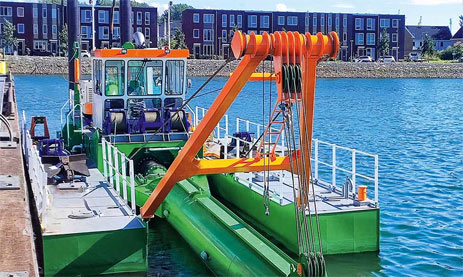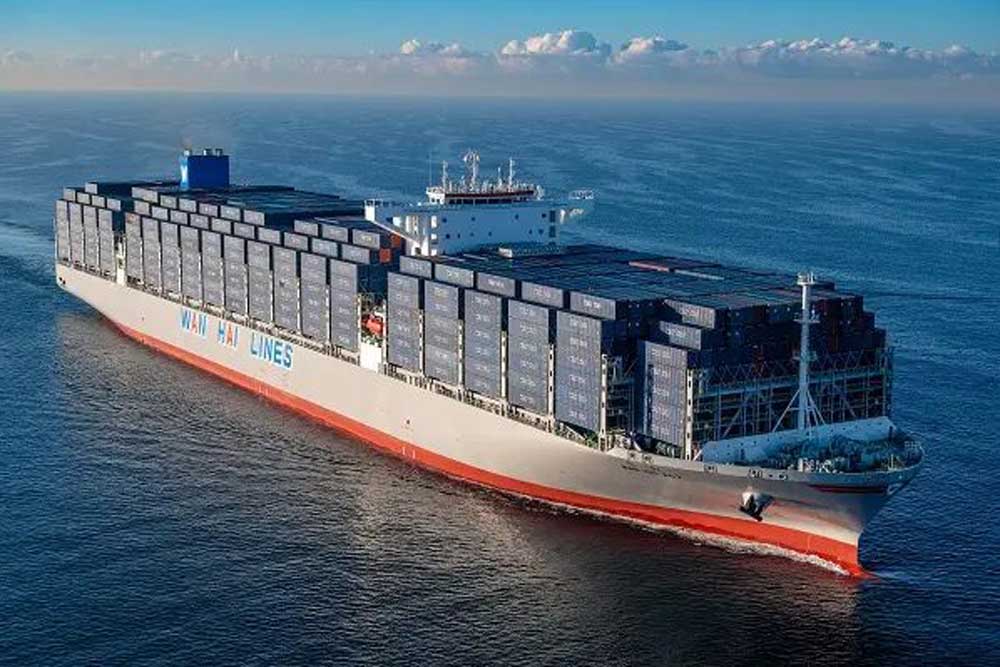The 88-metre-long seaside resort ship “Bremerhaven” sank 60 years ago, but could be salvaged. It was subsequently used as a mini-cruise ship for almost 40 years.
The sinking off the city of Bremerhaven marked the end of Bremen’s own activities in the Heligoland trade, which cost the taxpayer a lot of money at the time.
From the mid-1950s, the Bremen Senate had ambitions for a new seaside resort ship to Heligoland. The “Glückauf” of North German Lloyd had been in successful operation since 1954. However, compared to the modern tonnage used by Hadag on the Elbe, such as the new “Wappen von Hamburg”, the “Glückauf”, built in 1913, was no longer attractive enough.
In a report commissioned by the Bremen Senate, the “Glückauf” was judged to be too small and too slow, with guests from the Weser being able to stay on Heligoland almost twice as long as those from Hamburg. However, North German Lloyd had no interest in investing in a new building, as it was not expected to be profitable. The Bremen Senate took a different view and made generous plans and wanted to become a shipowner itself with the city of Bremerhaven in the Heligoland service.
To this end, the company Bremer Helgolanddienst was founded, over 50 percent of which was owned by the Bremen Senate. The city of Bremerhaven and more than 40 private investors from the business world were also involved. Critical voices that the operation would not pay off were quickly quashed. “It is in line with Bremen’s philosophy to carry out such a task, which is in the general interest, jointly through private and state initiative,” said Heinrich Maas, designated Chairman of the Administrative Board at the time.
Contract awarded to Argo Reederei by private treaty
In October 1959, the construction contract was awarded to the Adler shipyard in Bremen, a subsidiary of Argo Reederei, which did not even quote a fixed price but insisted on a price escalation clause. The shipyard, which already had financial problems at that time, was later accused of blatant miscalculation and whitewashing. During the construction period, which lasted only seven months, there were countless requests for changes, so that the construction price climbed from the original six to 7.5 million marks.
On the other hand, at the end of May 1960, the Bremen-based company was delivered the 88-metre-long “Bremerhaven”, a seaside resort ship for 1,400 day guests with the construction number 019, which just outperformed its Hamburg competitors in terms of size and speed. In order to generate a return on investment for the newbuild, the “Bremerhaven” was to be converted into a cruise ship for planned winter use. In six hours, twelve employees were to equip the ship with so-called swap cabins for 200 passengers. This idea also proved to be a financial disaster. Special flexible cabins were needed for the conversion, which drove up the costs so much that the finance deputation had to guarantee 4.5 million marks.
In May 1969, the “Bremerhaven” was delivered and on June 4, 1960, the ship set sail on her maiden voyage. In September, it then went on its first Baltic Sea cruise from Travemünde to Leningrad and Helsinki, followed later by a trip to London. In March 1961, the ship sailed to the western Mediterranean for the first time. Right after the first season, the state of Bremen had to provide a 1.5 million interest-free and repayment-free loan. This was because the operation of a cruise ship required a much larger crew than a seaside resort ship.
Loss of 3 million marks in three years
At the end of 1962, the loss amounted to more than 1.3 million marks, and the operating costs were one million marks higher than initially calculated. The Court of Auditors therefore intervened and the cruises were canceled without replacement. During this time, Bremen had already made a loss of 3 million marks. In 1963, the Bremen Senate decided to part with the “Bremerhaven”.
Several offers were made. For example, Bulgaria offered €6 million and the Swedish Stena Line wanted to spend €4.8 million. In the meantime, the shipping company D. Oltmann from Bremen took over the operation of the ship. But on April 13, 1965, the Bremen seaside resort service came to a swift end. That night, the “Bremerhaven” sank at her berth in the Kaiserhafen, directly behind the Kaiserschleuse lock.
The ship had previously been overhauled at the Seebeck shipyard for the upcoming Helgoland service. As painting work was still being carried out below deck, some of the portholes were open to improve ventilation. A lot of water later entered the ship through the open portholes in the tween deck, and after a short time the “Bremerhaven” lay on its starboard side on the harbor floor. Some of the superstructures, such as the mast and the narrow funnel, were destroyed and stuck to the edge of the quay. The crew members lying in their bunks on board were able to save themselves at the last moment, albeit only lightly clothed. Access to the Kaiserschleuse was blocked as a result of the accident.
Speculation about the causes of the sinking
There was much speculation about the exact causes of the sinking, and there was even talk of sabotage or insurance fraud. The police set up a special commission to investigate. In their final report and at the subsequent maritime authority hearing, a blocked valve caused by a broken bottle neck was determined as the cause. According to the investigation, water was therefore able to enter the sewage tank from the outside through the outlet pipe and on into the galley. If the portholes had been closed, only one section of the ship would have filled up and the ship would not have sunk.
The two Hamburg lifting vessels “Ausdauer” and “Energie” from Bugsier-Reederei came to Bremerhaven for the salvage operation. The plan was to raise the stricken vessel, pull her into shallower waters and then lift her with the help of hawsers. However, the preparatory work proved to be difficult and lengthy. It was not until Sunday, May 2, 1965 that the ship was finally at least half-right, and after 19 days and serious consideration, the salvage operation was called off.
On the last weekend of May 1965, it was possible to enter the interior of the ship again with dry feet for the first time. The ship was later towed to the Schichau shipyard, where the mud was removed. The repair costs were estimated at around 4 million marks.
By the start of the Heligoland season in 1965, there was no longer a seaside resort ship from the Weser. So Wolfgang Blaum, co-owner of the Oltmann shipping company, founded the company Bremer Seebäderdienst D. Oltmann & Co. without further ado and chartered the “Wilhelmshaven” and later the “Seute Deern” from the Cassen Eils shipping company, among others, for the upcoming season.
Change of ownership between 1965 and 2008
The former “Bremerhaven” was then sold to the Greek shipping company Sun Line in July 1965 for a price of between one and two million marks. The reaction of Bremen’s financial deputation after the loss-making deal was: better an end with horror than horror without end.
The new owner had the ship converted into a cruise ship in Greece and used it as the “Stella Maris II” for cruises in the Mediterranean, the Caribbean and on the Amazon. From 1995 to 1998, the ship sailed for Royal Olympic Cruises. In 1998 it was sold again and deployed by Viking River Cruises in the winter of 1998/1999 as the “Viking Bordeaux” from Banjul on the River Gambia, an important waterway in West Africa that rises in Guinea, flows through the Republic of Gambia and empties into the Atlantic. From spring 1999, it sailed from the base port of Nantes in France. In August 2000, it returned to its place of construction on the Weser and visited the Hanseatic city of Bremen as part of a Radio Bremen readers’ cruise.
In 2003, the small cruise ship was launched in Eemshaven in the Netherlands under the name “Bordeaux”, but was only sold to the Ukraine two years later. Renamed “Madagascar”, it then sailed under the flag of St. Vincent and the Grenadines for the Indian Ocean Cruises company for cruises in the Indian Ocean, but had to be relaunched a short time later in Durban, South Africa. On April 15, 2008, it was finally purchased in an auction by an Indian shipbreaking yard and then scrapped in Alang, India. (CE)














